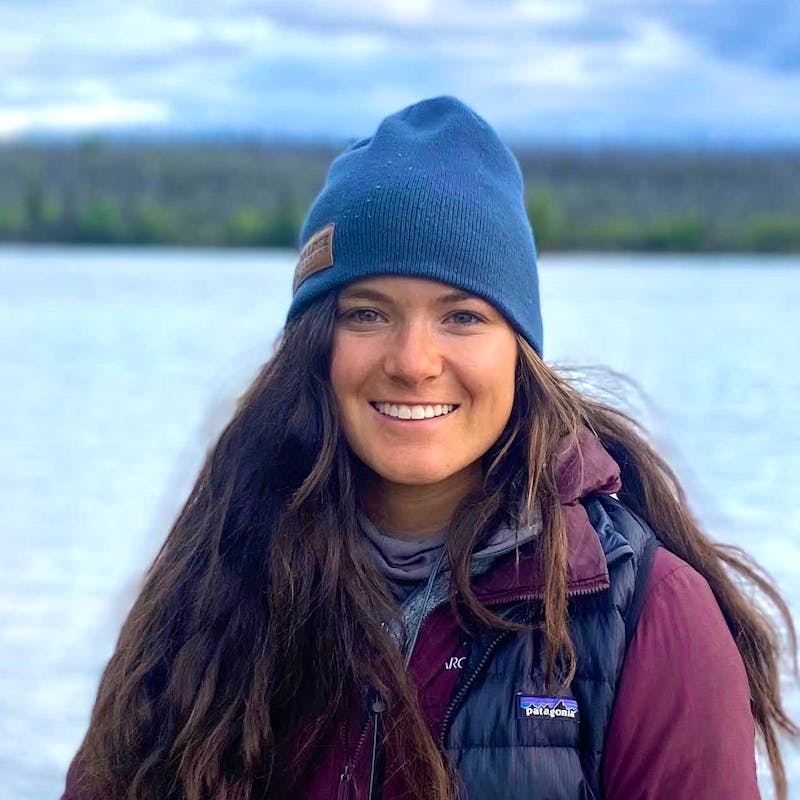This blog was co-authored by Defenders of Wildlife’s Alaska Intern Sebastien Comtois.
Standing on the shoreline near Anchorage, it’s a rare and remarkable sight to catch a glimpse of a white whale surfacing near Ship Creek. Cook Inlet beluga whales are a genetically unique and culturally iconic population, and there are only about 331 remaining, compared to an estimated 1,300 in the 1970s.
A less rare experience on Anchorage’s coast is seeing ships come and go. Cook Inlet is a working waterway. Construction buzzes at the Port of Alaska and industrial development continues along the coast. Underwater, this translates into a rising tide of sound, and for beluga whales, sound is everything.
When the Ocean Isn’t Quiet
Belugas navigate through murky Alaskan waters using echolocation, a biological sonar allowing them to see with sound. They rely on high-pitched whistles, clicks and chirps to maintain social bonds, coordinate hunting and communicate between mothers and calves.
But this communication happens at the same frequency as marine traffic. It’s like trying to talk in the pit of a rock concert. And, unlike humans, belugas can’t just plug their ears when the noise is too loud.
When loud, low-frequency noises enter the water — especially during activities like pile driving, where steel or concrete piles are vibrated or hammered into the seafloor — they can mask the sounds belugas need to hear. Worse, the volume can reach levels that cause the whales to flee, abandoning essential habitat or their hunt for prey.
Mapping the Problem
Recent research and public engagement efforts have shed light on just how far underwater noise from pile driving travels. In the Port of Alaska, depending on the type and size of piles, sound can radiate more than 12 miles (20 kilometers) underwater before falling below the 122.2 decibels (dB) threshold for behavioral disturbance, or what’s known under the Marine Mammal Protection Act as Level B harassment. Level B harassment is defined as any action causing an animal to change its behavioral patterns.
Using maps, like those above, we can compare the range affected by pile driving to where belugas are frequently sighted. Thanks to ongoing efforts like the Alaska Beluga Monitoring Partnership, we know belugas use areas like Ship Creek, Turnagain Arm, Knik Arm and the Kenai River for feeding, calving and migrating. These high-use areas, many just a few kilometers or less from major infrastructure, sit right inside the acoustic danger zones.
Why It Matters
Cook Inlet belugas are listed as endangered under the Endangered Species Act. They are threatened by climate change, prey depletion and habitat loss in addition to noise pollution. And, unlike other beluga populations in Alaska, Cook Inlet belugas are isolated both genetically and geographically, meaning they can’t just swim to quieter waters.
When belugas are displaced from feeding grounds due to noise, the consequences ripple outward from lost foraging opportunities and disrupted maternal care to chronic stress. This adds up over time. Studies on other marine mammals show that chronic acoustic stress can suppress immune function, reduce reproductive success and even alter movement patterns.
Every individual matters in a small population. A single mother driven from a high-quality feeding area during calf-rearing season could lose that year’s offspring. A pod forced to scatter during pile driving could miss a key salmon migration window. These aren’t just inconveniences, they’re responses with life-and-death consequences, influenced by how loud beluga habitat becomes.
But there’s good news! Noise is a problem we can solve. It’s local, immediate and reversible. With better planning and public pressure, we can reduce its impact.
Defenders of Wildlife is helping lead the charge through science-informed advocacy efforts to help ensure port development, shipping and construction can proceed without drowning out Alaska’s wildlife. One such effort is our mapping work. We can show beluga hot spots using available monitoring data and traditional knowledge and overlay threat zones from pile driving and other noise-generating activities. These maps help pinpoint where to focus efforts to make the greatest impact.
We’re also pushing for stronger protections during critical seasons like calving and feeding. By promoting mitigation techniques such as seasonal construction limits, air bubble curtains and “quiet windows,” we can aid in the recovery of Cook Inlet belugas.
How You Can Help
Whether you live in Anchorage or across the country, you can make a difference! Here are three easy ways you can help belugas:
- Report beluga sightings through the opportunistic sighting portal: https://www.cookinletbelugas.com/cibw-sightings
- Advocate for noise limits in marine planning processes
- Support organizations working to protect Alaska’s unique ecosystems
Cook Inlet belugas are more than a conservation case study. They are storytellers, mothers and hunters. They remind us that the ocean isn’t silent, but it can still be safe.
Let’s work together to turn down the volume.
If you’d like to learn more about these whales and have the opportunity to monitor them with beluga experts and advocacy partners, join us on September 13 for our Belugas Count! event across Turnagain Arm and Cook Inlet!












